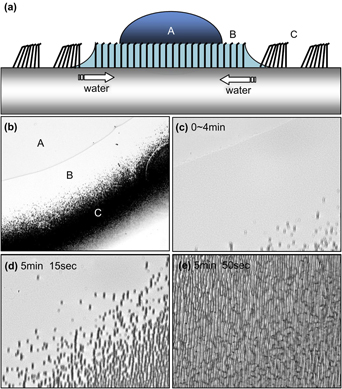Published online by Cambridge University Press: 19 January 2011

Highly aligned microstrip patterns consisting of biaxial CaF2 nanorods have been successfully self-assembled by simply using capillary pressure. The alignment direction of the microstrips is perpendicular to the flux direction during nanorod growth. Aligning behavior and pattern width can be controlled by changing wetting time and surface tension of the liquid. Higher surface tension and longer wetting time result in wider pattern width and better alignment. Taller nanorod height also results in better pattern alignment. Simple and cost-effective self-aligned microstrip patterns can be potentially used as a template for various applications, such as superhydrophobic surfaces, tissue scaffolds, microchannels, and optical polarizers.